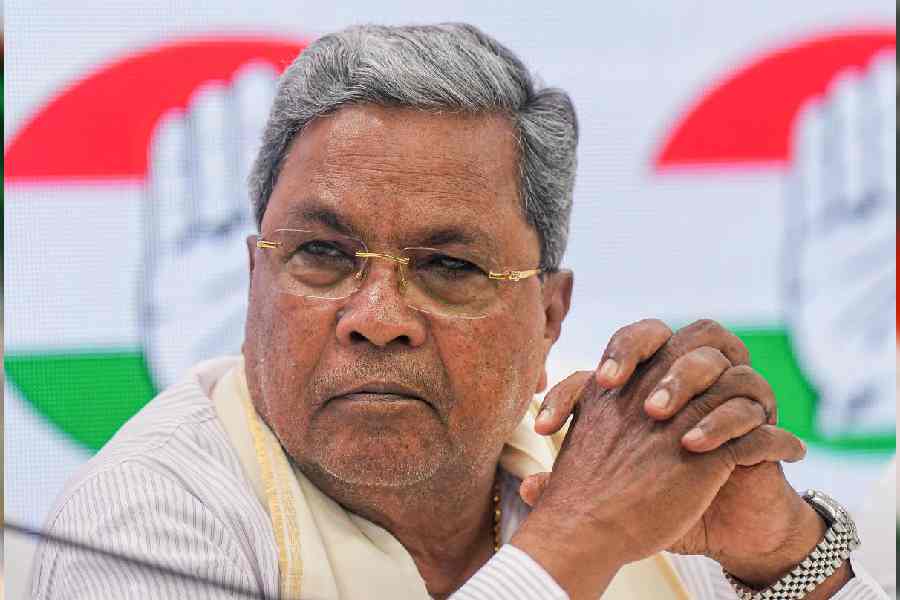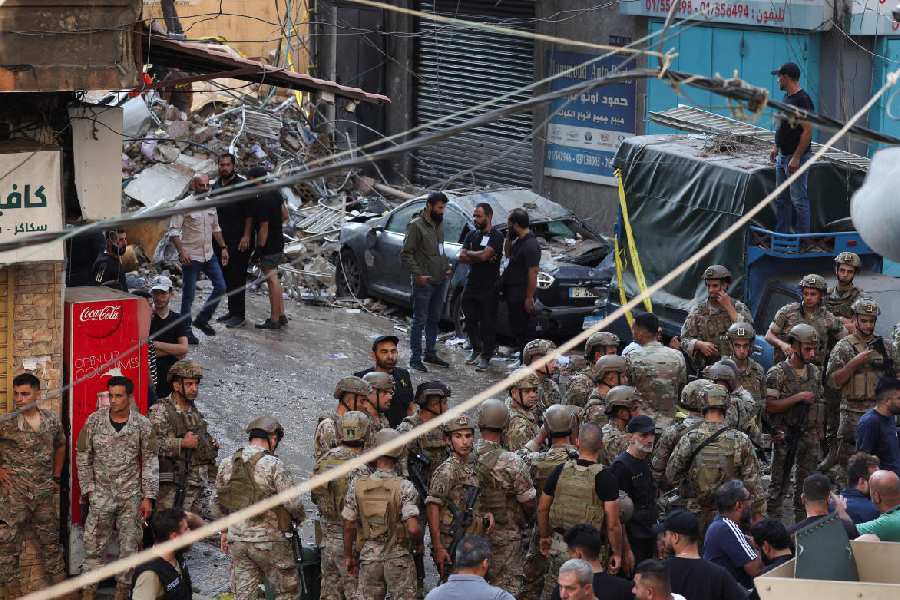 Wednesday, 25 September 2024
Wednesday, 25 September 2024
 Wednesday, 25 September 2024
Wednesday, 25 September 2024
The cry for capital punishment fills the air whenever a rape case shakes the collective conscience. The demand for hanging of the rapist has remained constant, from the 1978 Ranga-Billa case to the case of the 31-year-old postgraduate trainee doctor found dead at the government-run RG Kar Medical College and Hospital in Calcutta on August 9.
Hence, it wasn’t a surprise when the Bengal government passed a legislation to push for the noose for such cases on September 3. Bengal’s Aparajita bill, even if it does get notified into law, will not apply to the RG Kar case.
The Indian judicial system does not readily impose capital punishment, three criminal lawyers pointed out to The Telegraph Online. Factors such as strength of the evidence influence convictions and scope of reform and age of the convict influence the sentences handed down to convicts.
Any case based on circumstantial evidence is tricky, they underlined.
Death sentence of Dhananjoy Chatterjee
In 1990, Dhananjoy, a security guard, was convicted for the rape and murder of an 18-year-old schoolgirl in Calcutta’s Bowbazar area.
The girl’s mother found her dead in the bedroom when she returned home.
There was a frenzy demanding Dhananjoy’s hanging. It was turned into a public spectacle with the hangman, Nata Mullick, giving interviews and the then chief minister Buddhadeb Bhattacharjee’s wife, Mira Bhattacharya, supporting the demand for the noose with demonstrations on the streets of Calcutta.
Dhananjoy claimed he was falsely implicated, but he was hanged in 2004 on his birthday after 14 years of legal battles.
“The court sentenced the convict to death based on the conclusive circumstantial evidence,” said Supreme Court lawyer Paras Joshi. “This included motive and absconding, the discovery of several pieces of evidence directly connecting the convict to the scene of crime, and the recovery of a stolen wristwatch from his house.
“The court highlighted the particularly heinous nature of the crime, where the appellant not only raped a defenseless 18-year-old girl but also murdered her in cold blood,” he added. “The court felt that there was no room for mitigating circumstances; the security guard’s position of trust and his premeditated actions aggravated the crime.”
Another Supreme Court lawyer, Sana Raees Khan, said the prosecution established a motive related to financial disputes and personal issues between Dhananjoy and the victim.
“Investigators also found bloodstains and other forensic traces that linked him to the crime scene,” Khan said.
But Dhananjoy’s hanging was a rare outcome in rape-murder cases in which there are no witnesses.
Kamduni gang-rape and murder
The brutal gang-rape and murder of a 20-year-old college student on June 7, 2013 in Kamduni, around 15 km from the North 24 Parganas district headquarters of Barasat, had shaken Bengal.
Six people were arrested for the crime. The sessions court awarded three of them the death penalty and three others life imprisonment.
On October 6, 2023, Justice Joymalya Bagchi and Justice Ajoy Kumar Gupta of the Calcutta high court acquitted one of the death-row convicts while commuting the death sentences of two others. The court also reduced the life terms of the three other convicts to seven years.
“In a case based on circumstantial evidence, prosecution may rely on false explanation by an accused as an additional link only after marshalling other incriminating circumstances a reasonable inference of guilt is made out,” the high court order said.
“Prosecution must stand on its own leg and not on the weakness of the defence,” it said.
The case is now in the Supreme Court.
Phiroze Edulji, a lawyer who represented one of the accused in the Kamduni case, had told the Calcutta high court that the RG Kar case would go the Kamduni way for the same reason of “botched up” investigations.
According to Supreme Court lawyer Khan, the forensic evidence linking the accused to the Kamduni crime scene was deemed insufficient and key witness accounts were inconsistent or lacked credibility, undermining the prosecution’s case.
“There was no direct evidence establishing the accused’s involvement in the crime, relying instead on circumstantial evidence,” Khan said. “The Calcutta high court commuted the sentences of the accused due to issues regarding the fairness of the trial process, including potential bias and the treatment of evidence. The high court emphasised the need to adhere strictly to legal standards in criminal cases, particularly when life sentences or the death penalty is involved.”
Govindachamy’s life sentence
On February 1, 2011, a man named Govindachamy assaulted, robbed, threw off the train, pursued, raped and killed a 23-year-old mall worker in Kerala.
Govindachamy allegedly pushed the woman out of the train, then followed her and raped her in a desolate area near Vallathol railway station. Then he assaulted her with a stone. The woman died five days later from her injuries.
The Kerala government sought the death penalty, but the Supreme Court reduced the sentence to life imprisonment in 2022, citing insufficient evidence that Govindachamy had pushed the woman off the train.
“The Supreme Court found that the accused did not have the necessary intent or knowledge to cause death,” said SC lawyer Paras Joshi. “His act of placing the victim in a supine position was for sexual assault, not to inflict fatal harm. Also, the court observed that there was no conclusive evidence proving that the accused pushed the victim out of the train. The possibility that she may have jumped could not be ruled out. Ultimately, the charges were modified from murder to grievous hurt. As a result of this finding, the court ultimately decided to commute the death penalty. So, we can see that in addition to other factors, the intention to kill also plays an important part in making out a case for rarest of rare.”
Santosh Kumar Singh case
Santosh Kumar Singh was convicted for the 1996 rape and murder of a law student in Delhi. He was first acquitted by the trial court but received the death sentence from the Delhi high court in 2006. In 2010, the Supreme Court commuted his sentence to life imprisonment, citing insufficient grounds for capital punishment.
There was a huge uproar. Singh was the son of an influential IPS officer.
In reality, the apex court upheld the principles of the Indian legal system, lawyers said.
“Santosh Kumar Singh’s life sentence was due to the mitigating factors like reform potential, and considering the family, fatherhood being in the convict’s favour,” said Abhisar Chaudhary, an advocate at Punjab and Haryana high court.
What evidence is vital in rape-murder cases?
“Evidences that are considered vital in court in cases of rape and murder are DNA samples from the victim and suspect, bodily fluids and any trace evidence such as hair, fibres found at the scene,” SC lawyer Sana Raees Khan said.
According to Khan, autopsy provides insights into the cause of death and any signs of struggle or assault, and toxicology reports reveal substances in the victim’s system. Pivotal are the statements from witnesses who may have seen or heard something relevant to the case; video recordings from nearby cameras can help establish timelines and identify suspects.
The texts, emails, social media interactions, and location data from phones that could potentially connect the suspect to the crime are crucial pieces of evidence in establishing the suspect’s motive.
In the RG Kar rape-murder the publicly known pieces of evidence that link the arrested accused, Sanjay Roy, to the crime are CCTV camera footage allegedly showing him entering and leaving the seminar hall where the body was found, and a blue Bluetooth headphone, allegedly belonging to Roy, found near the body.
The Central Bureau of Investigation that is probing the RG Kar case has not yet made public the results of any forensic tests.
In 2023, sessions courts across India issued 120 death sentences, 53.3 per cent of them related to sexual offenses, according to data from Project 39A of the National Law University, Delhi. By the end of the year, 561 prisoners were on death row, the highest number recorded since Project 39A started tracking capital punishment in 2016.







